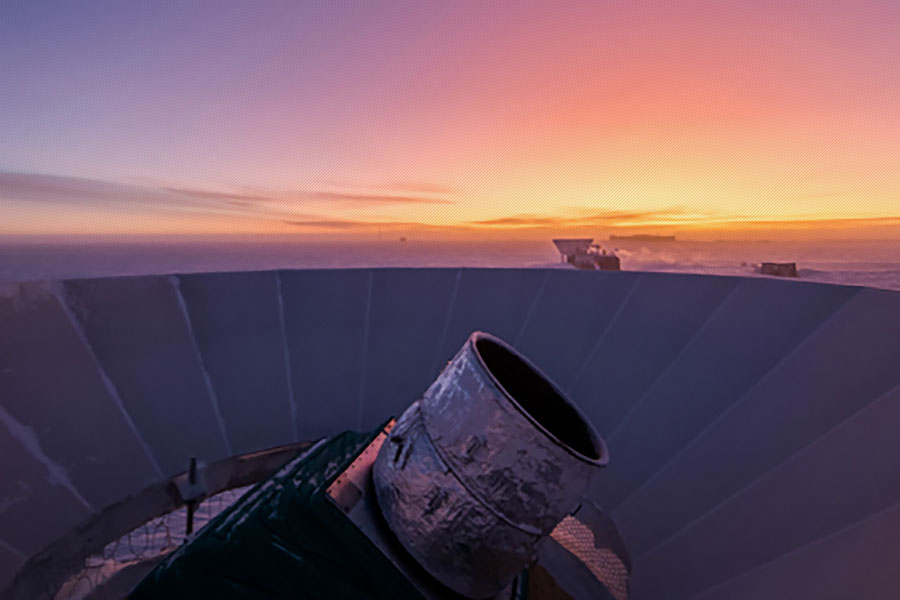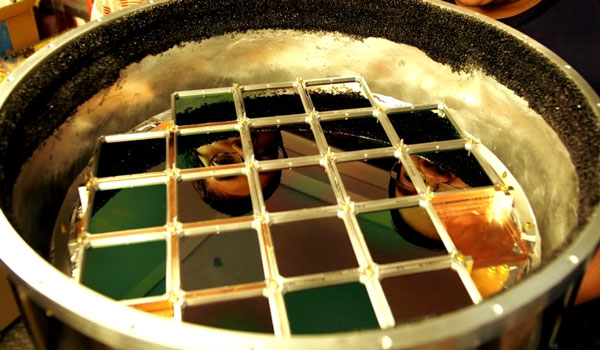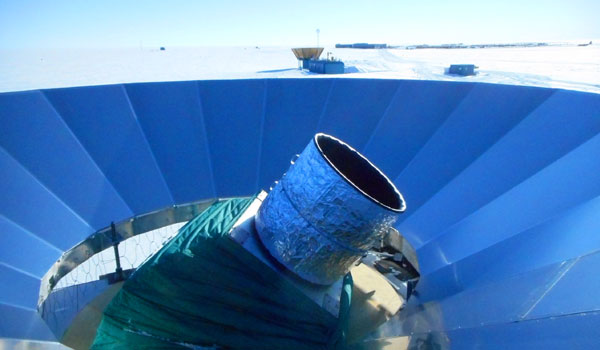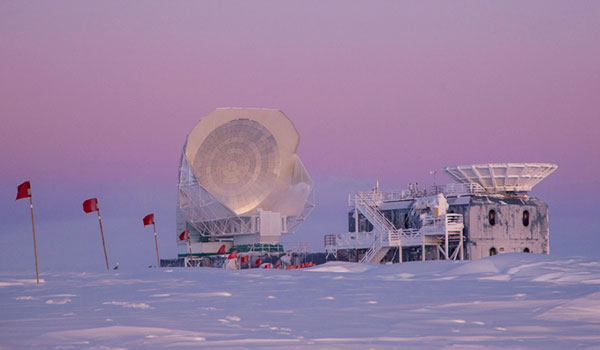Above:
MDL’s antenna-array coupled TES bolometers observe the CMB from the South Pole in the BICEP telescopes.
Superconductors for CMB
Looking Back Towards the Beginning of Time
Cliff Frez - Krikor Megerian - Lorenzo Minutolo - Roger O’Brient - Anthony Turner - Alexis Weber
The Cosmic Microwave Background is our most ancient image of our universe – a thermal afterglow of the Big Bang with subtle variations in intensity and polarization. These patterns have allowed physicists to measure the relative quantities of visible matter, dark matter, and dark energy in our universe as well as characterize the curvature of space on the largest scales. All measurements have been used to test our models of the inflationary Big Bang. Current projects are measuring the polarization’s swirly B-mode component. Some of these experiments measure the mass of the three neutrino species in order to better understand the relationship between the nuclear and electromagnetic forces. Others search for inflationary gravitational waves that might provide a window into physics a trillion times hotter than accelerator experiments.
JPL has played a leading role in this field and MDL has provided detectors and electronics for many leading experiments. Early efforts focused on NTD-Ge bolometers used in the ESA Planck satellite as well as several suborbital CMB experiments that preceded it. More recently, JPL has produced antenna-array coupled Transition Edge Sensor (TES) bolometers for the BICEP and Keck Array polarimeters at the South Pole and the balloon-borne SPIDER experiment. These technologies benefit from MDL’s long and rich experience in superconducting materials and fabrication techniques, allowing for high yield and highly sensitive devices. To date, the JPL detectors in the BICEP and Keck Array experiments have set the tightest constraints on the inflationary gravitational waves of r<0.06, ruling out several once-popular models of inflation. BICEP/Keck’s multicolor maps, spanning from 90 to 270GHz, control for polarized galactic emissions that contaminate these maps. The next generation BICEP Array will add additional channels at 30 and 40GHz as well.
NASA is currently studying a possible probe mission for CMB polarimetry called PICO. PICO will use 12,000 detectors to map the CMB across the entire sky. Thanks to the compact and lightweight format that JPL-MDL’s antenna-array coupling offers; these detectors are a contender technology for this instrument’s focal plane.
MDL continues to innovate superconducting detectors beyond TES’s for CMB. Our team has developed Kinetic Inductance Detectors (KIDs) that would provide simple frequency domain multiplexing and reduce risk in future missions and experiments. We are also developing bolometric KID’s, also known as thermal KID’s, which blend traditional KIDs’ simple readout with the bolometer properties to provide more design parameters to tune sensitivity and coupling efficiency over a wide spectral range.
BICEP3 focal plane prior to installation (courtesy of Zeeshan Ahmed).
+ Larger image
Bicep 3 Telescope encloses a pack of 20 – 4 inch TES array tiles. Each tile consists of 64 dual polarization pixels for a total of 1280 polarized pixels all centered at 95GHz. Images courtesy of the Bicep 3 Consortium.
+ Larger image
MDL’s antenna-array coupled TES bolometers observe the CMB from the South Pole in the BICEP telescopes.
+ Larger image





